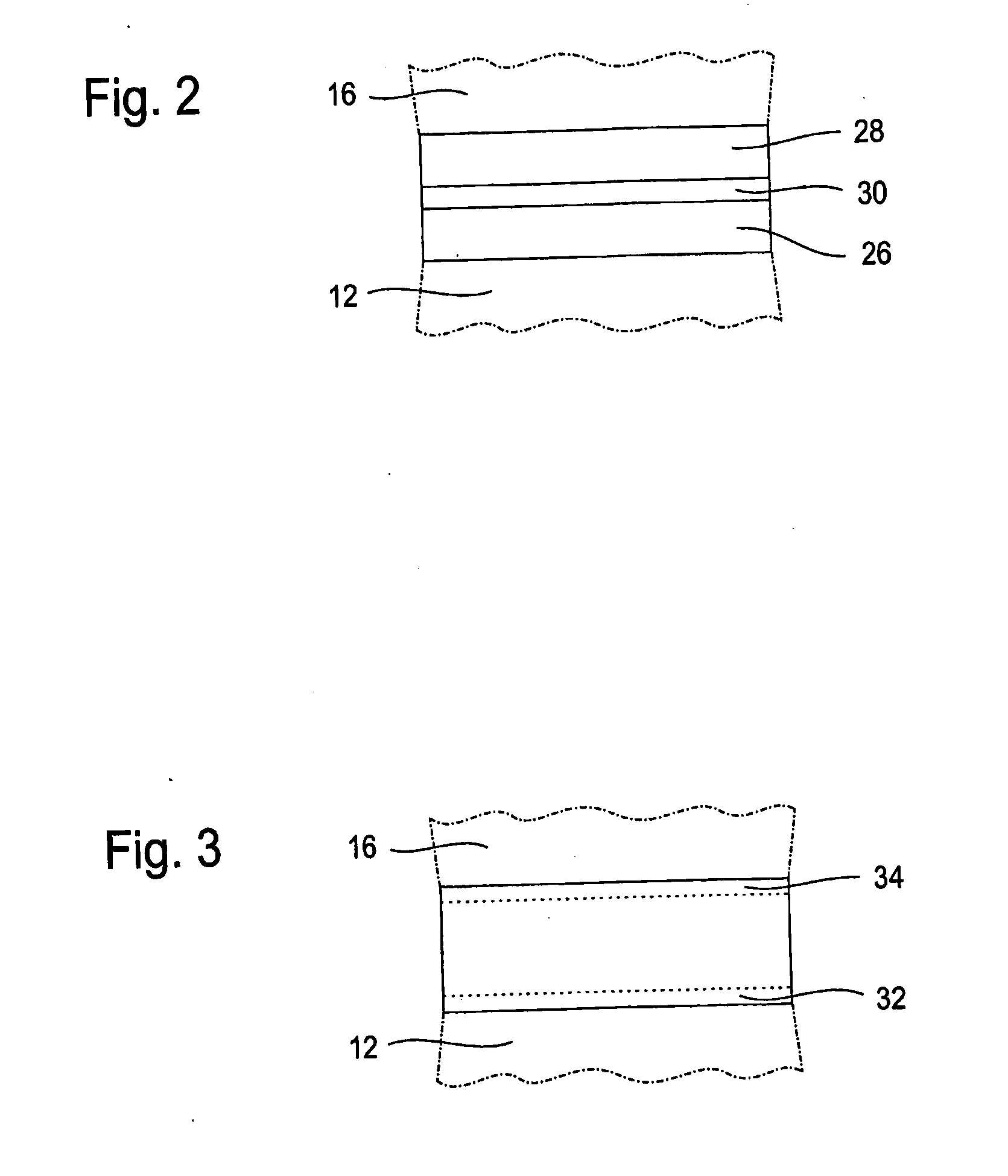Component for a gas turbine and a method for the production of the component
a gas turbine and component technology, applied in the direction of turbines, machines/engines, manufacturing tools, etc., can solve the problems of reducing the reliability and service life of the joining zone, affecting the durability of the component joint, and reducing the lattice vacancy, so as to reduce the diffusion rate of atoms, increase the lattice tension in the matrix, and reduce the effect of lattice vacancy
- Summary
- Abstract
- Description
- Claims
- Application Information
AI Technical Summary
Benefits of technology
Problems solved by technology
Method used
Image
Examples
Embodiment Construction
[0029]FIG. 1 shows a schematic view of a gas turbine rotor 10 preferably for a gas turbine of an aircraft engine, said turbine rotor being configured as a rotor with integrated blades. Accordingly, the gas turbine rotor 10 has a rotor base 12 as well as turbine blades 14, whereby the turbine blades 14 are an integral part of the rotor base 12.
[0030]Such a rotor with integrated blades is also referred to as a blisk (blade integrated disk) or as a bling (blade integrated ring), depending on whether the rotor base is disk-shaped or ring-shaped.
[0031]The rotor base 12 is made of a high temperature-resistant nickel alloy, preferably a nickel superalloy such as Inconel 718.
[0032]A plurality of turbine blades 14—only one of which is shown in FIG. 1—is joined to the rotor blade 12. The turbine blades 14 each comprise a rotor blade 16 made of a titanium alloy as well as a blade root that is configured as an adapter element 18.
[0033]The titanium alloy of the rotor blade 16 is preferably selec...
PUM
| Property | Measurement | Unit |
|---|---|---|
| Fraction | aaaaa | aaaaa |
| Fraction | aaaaa | aaaaa |
| Fraction | aaaaa | aaaaa |
Abstract
Description
Claims
Application Information
 Login to View More
Login to View More - R&D
- Intellectual Property
- Life Sciences
- Materials
- Tech Scout
- Unparalleled Data Quality
- Higher Quality Content
- 60% Fewer Hallucinations
Browse by: Latest US Patents, China's latest patents, Technical Efficacy Thesaurus, Application Domain, Technology Topic, Popular Technical Reports.
© 2025 PatSnap. All rights reserved.Legal|Privacy policy|Modern Slavery Act Transparency Statement|Sitemap|About US| Contact US: help@patsnap.com



